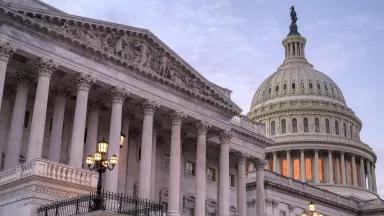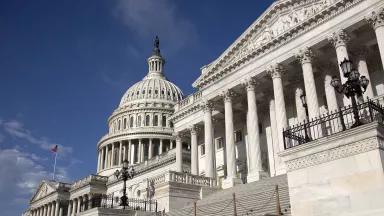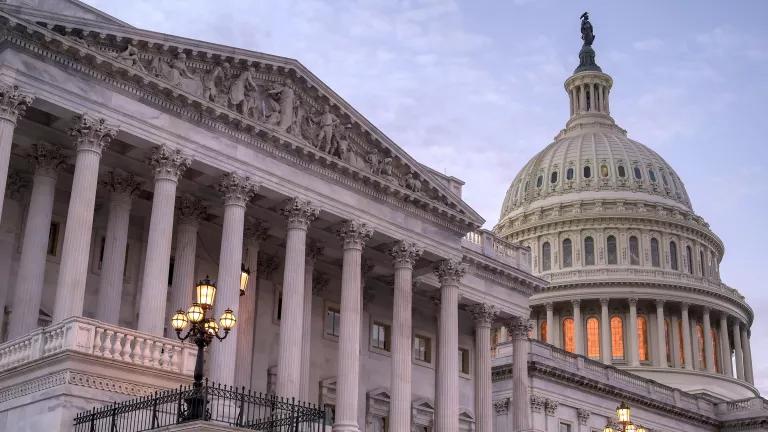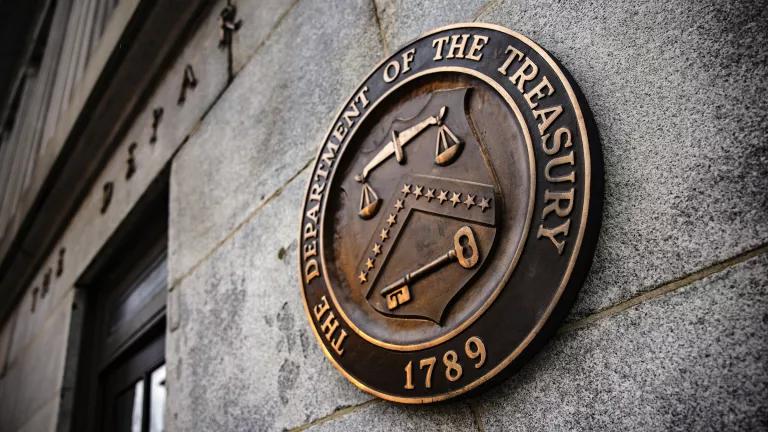Funding the Government for FY2024, Part 3: The Senate to the Rescue?
In part 3, I examine the more respectable work of the Senate and conclude with potential next steps.
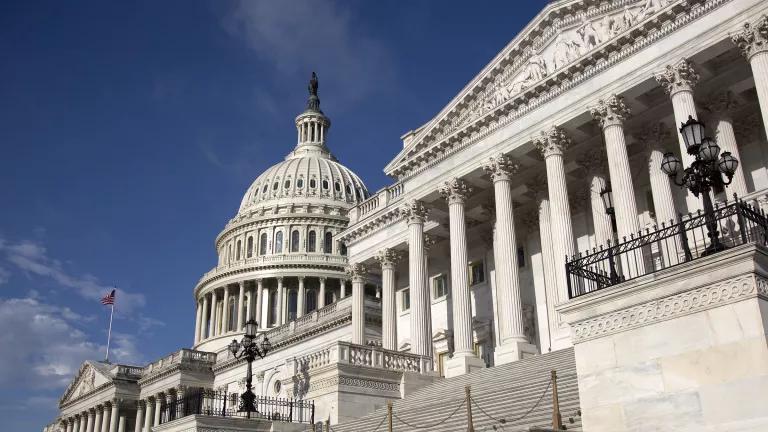
Sarah Baker
It’s time for my annual accounting of how the federal appropriations process is playing out. The short answer: One house of Congress is doing the work…while the other is falling flat on its face. This does not bode well for keeping the federal government’s lights on, but there still is hope that disaster can be averted.
Note that this blog has three parts. In part 1, I summarize the overarching state of play in the government funding space. In part 2, I take a look at the shoddy work of the House of Representatives. I round things out in this part 3 by examining the more respectable work of the Senate before concluding by discussing potential next steps.
We’re nearly done! In our last edition, I spent a few thousand words hammering the House of Representatives for its juvenile parody of the appropriations process. I now turn to the more serious work conducted by the Senate over the past few months before concluding briefly by looking ahead. You’ll be happy to hear that this final part of my appropriations trilogy is less grim than the first two. Now, let’s close this out.
In the Senate
As an alumnus of the House, it pains me to say this, but the Senate did admirable work putting forward the best possible appropriations products in light of the difficult conditions imposed upon it by the debt limit law. Rather than following the House’s lead and engaging in senseless theatrics, the Senate did the difficult, serious work of forging consensus, engaging in compromise, and carving from hard stone all 12 of the general appropriations bills mandated by law, reporting them from their Appropriations Committee with near unanimity. You read that right! Even in this hyper-partisan, politics-before-governance era, the Senate appropriators—led, it must be said, for the first time by two women, Senators Patty Murray (D-WA) and Susan Collins (R-ME)—moved all of their bills out of committee, and did so with resounding bipartisan support. This is an incredibly impressive accomplishment.
With that acknowledged, it must also be said that these bills are, on the main, pretty unexciting from an environmental perspective. But—and I risk having my environmentalist’s credentials revoked for saying this—that’s…actually okay. Not every bill can be a major climate win, like last year’s Inflation Reduction Act (IRA), or provide a much-needed cash infusion to a subset of important environmental priorities, like 2021’s Infrastructure Investment and Jobs Act. Some measures are just an important part of a broader legislative whole and, although environmental priorities and objectives should be a part of such initiatives and not undercut therein, they must follow a center course in the name of good governance. Indeed, the annual appropriations bills often follow such a course, as bipartisan buy-in is usually required to keep the federal government functioning. Protecting the environment is difficult, if not impossible, in the face of utter governmental dysfunction. In light of this, compromise—without setting back environmental achievements landed in prior legislation—can be acceptable, and can even be considered a win.
It may not stir enthusiasm, but given the dire context for FY2024 laid out above, it should be acknowledged that the Senate did admirable work in: (1) marking up to the full amount allowed by the debt limit law; (2) moving bills with actual bipartisan buy-in; and (3) avoiding—for the most part—the insertion of new policy riders of the like that plague the House’s appropriations legislation. And even as they operated under significant constraint, the Senate still managed to put forward some incremental environmental victories, some of which I call out below. There also were some setbacks, of course, and they will be identified. In the end, however, I have to say: Well done, Senate.
With that out of the way, here’s my breakdown of the Senate’s bills:
Interior, Environment, and Related Agencies
Overall funding for the Senate’s bill on appropriations for the U.S. Department of the Interior, environment, and related agencies came in (after some nifty accounting sleight of hand by the appropriators) at just about $400 million below FY2023 levels—but remember, this is a mere drop in the bucket in comparison to the House’s maniacal $5.7 billion reduction. Further, the Senate’s promise of no new environmental policy riders was kept (though legacy riders remained in place). Again, in a vacuum, this is nothing to paint the town red over, but, given the unfortunate guardrails put in place by the debt limit law and the appropriators’ mandate to draft a bill that would satisfy both parties, this can be considered a success.
- On the plus side, the bill:
- provides $108 million for environmental justice objectives, which is not as much as is needed but a leap ahead of the House;
- devotes $4 million above FY2023 for the EPA’s clean air and climate programs;
- furnishes $35 million above FY2023’s allocation for geographic restoration programs, which help to protect local ecosystems and communities from climate change, habitat loss, and pollution;
- keeps funding flat for the Clean Water and Drinking Water State Revolving Funds (at approximately $2.76 billion) vis-à-vis FY2023; to be clear, these funds really needed an increase to achieve the Biden administration’s objective of clean, lead-free water for all but, given the limited pot of money the appropriators had to work with, this was an impressive accomplishment;
- provides a vital $4.04 billion for wildfire suppression, of which $2.65 billion is supplied to the Wildfire Suppression Operations Reserve Fund; and last, but certainly not least,
- puts forward important report language encouraging federal land managers to work with their state-level counterparts on beaver conservation, calling on them “to make planning decisions that recognize beavers’ environmental and ecological benefits, and to identify locations where restoration of their habitat may be most beneficial.”
On the negative side of the ledger:
- Funding for the EPA’s Superfund—which foots the bill for cleaning up some of the nation’s most contaminated land and responding to environmental emergencies, oil spills, and natural disasters—was cut by $282 million.
- The Land and Water Conservation Fund, which supports the conservation of public lands and improvement of outdoor recreation opportunities throughout the country, saw a $100 million reduction.
- A troubling policy rider was carried over from prior years that wrongly insists upon the carbon neutrality of forest bioenergy and the recognition of biomass as “a renewable energy source.”
- Perhaps most worryingly, the bill failed to fund the Biden administration’s proposed 5.2 percent cost-of-living adjustment (COLA) for the federal employees covered by the bill. This was, perhaps, a necessary evil, given the limited funds that the appropriators had to work with, along with the panoply of competing priorities with which they were faced. Still, a failure to eventually support the FY2024 COLA would almost certainly result in woeful attrition at many of the federal entities covered by the bill (like the already strapped EPA or National Park Service). It is NRDC’s hope that this COLA deficit will be resolved before the FY2024 appropriations process concludes.
Notwithstanding the above reservations, it is once more worth noting that coming up with a compromise text in this space—one that was reported unanimously out of committee—is a real accomplishment. It is vital that the Senate appropriators: (1) take the above feedback with respect to the bill’s environmental priorities into account; while (2) holding firm against the dreck that has been put forward by the House. It will be challenging, but the Senate’s hard work at bipartisan compromise must win the day against the House’s unapologetic legislative cynicism.
Now let’s take a look at a few of the Senate’s other hard-won bills.
Energy and Water Development
In addition to providing a total of just above $58 billion in total funding, the Senate’s bill on appropriations for energy and water development and related agencies contains a number of provisions of interest.
On the positive side:
- a series of appropriations for the Office of Energy Efficiency & Renewable Energy that sets aside $3.68 billion, which represents an increase of $227 million above FY2023 (and stands in stark contrast to the House bill’s 14 percent decrease);
- language dedicating a total of $1.92 billion for the Bureau of Reclamation to aid in the delivery of reliable water and hydroelectric power; and
- overall appropriations of $290 million for the Office of Electricity and $60 million for the Grid Deployment Office to help facilitate transmission for the build-out of clean energy—not ideal amounts, but substantial under the circumstances.
One standout on the negative end: language (in section 307) that contradicts the Nuclear Waste Policy Act and enables the creation of a pilot program that would license, construct, and operate federal, consolidated interim storage facilities for spent nuclear fuel and high-level radioactive waste—before a broader system is even in place to obtain the consent of host states, units of local government, and affected Indigenous People. It is NRDC’s stance that this language should be struck from any final government funding package.
Agriculture, Rural Development, Food and Drug Administration, and Related Agencies
The Senate’s annual appropriations bill covering the agricultural sector provides just under $26 billion in funding for FY2024, with the following notable positive provisions in our space:
- a $48.6 million increase for the Agricultural Research Service, the USDA’s important in-house research agency.
- $50 million in funding for the USDA’s Sustainable Agriculture Research and Education program, which is less than the $60 million called for in the Biden administration’s budget request, but more than the $45 million in the House bill.
- just above $22.7 million for the National Organic Program, which is less than the $24 million requested by the Biden administration, but much more than the zero dollars(!) set aside in the House bill.
- much-needed report language directing:
- sustained funding for the USDA’s Wildlife Services Nonlethal Initiative to continue implementing nonlethal strategies to reduce human-wildlife conflicts;
- the USDA to continue to research, develop, study, and/or assess: (1) agrivoltaics; (2) wood product quality improvement; (3) nutrient and water management, best practices, logistics, the agriculture-energy nexus, and economic feasibility for controlled environment agriculture; and (4) algae and algae application in agriculture; all while (5) furnishing an additional $1.5 million for cooperative agreements to support the research, development, and acceleration of agriculture technology;
- the USDA’s Office of General Counsel to hire staff with expertise in organics to address the agency’s rulemaking backlog;
- the USDA’s National Agricultural Statistics Service and Economic Research Service to prioritize data collection and analysis on organics; and
- more targeted organics research.
It is also worth noting that the Senate bill featured a handful of real setbacks, including:
- an unfortunate cut to the USDA’s conservation efforts of just above $3.9 billion, a near-$900 million decrease from the administration’s budget request and $138 million less than was allocated for FY2023.
- the painful elimination from the bill of the USDA’s Office of Urban Agriculture.
- the setting aside of a mere $10 million for the USDA’s Grazing Lands Conservation Initiative.
The encouraging provisions above should be defended in bicameral negotiations with the House, while the disappointments should be remedied by whatever means the appropriators have at their disposal.
Provisions of Note in the Other Senate Bills
With respect to the Senate’s other efforts:
- The principal positive feature of the Senate’s bill on appropriations for the U.S. Department of State, the Foreign Operations Administration, and related programs is that it is not the House bill, which (as observed in part 2) contained a shocking repeal of more than $11 billion in EPA funding. The Senate bill’s allocations for international climate finance are still disappointing; this surely is a product of the caps in the debt limit law, and the price of moving the measure forward on a bipartisan basis. Still, the Senate appropriators managed to muster $760 million for bilateral climate programming, $150 million for the Clean Technology Fund, as well as regular funding for the Montreal Protocol Multilateral Fund, United Nations Framework Convention on Climate Change, and the Intergovernmental Panel on Climate Change, all of which received zilch from the House. The Senate bill lacks set-asides for important initiatives like the aforementioned Green Climate Fund, the multilateral Adaptation Fund, and the Least Developed Countries Fund. Hopefully, vital causes like these will see some much-needed funding directed their way, either during bicameral appropriations negotiations—from more flexible accounts from which the administration can allocate funding—or via a separate spending bill geared toward disaster response.
- The Senate’s bill making appropriations for the U.S. Department of Transportation, U.S. Department of Housing and Urban Development, and related agencies is, unsurprisingly, an improvement over the House’s measure when it comes to overall funding levels, and these dollar amounts should be protected in any bicameral funding negotiations. Still, the Senate’s work carried at least one negative element that should be excluded from whatever measure eventually becomes law: report language directing the Secretary of Transportation to provide comments to the National Marine Fisheries Service that could undercut a rule—presently is under consideration—to monitor and control vessel speeds in particularly sensitive areas in an effort to protect the critically endangered North Atlantic right whale. A policy provision like this—let alone one that espouses a directive that could be deleterious to a near-extinct, iconic marine mammal—has no place in any appropriations package.
- Though NRDC typically does not take issue with bills making appropriations for the Department of Defense, this year’s Senate product carries report language requiring the U.S. Air Force to study the impacts of the NOAA’s proposed critical habitat designation to protect another marine mammal on the brink—the Rice’s whale—on the Air Force’s use of the Eglin Gulf Test and Training Range. The military did not request this language, nor does it have any wish to carry out training activities in the area set aside for the protection of this poor creature, whose population stands at less than 100. This language is a problem in search of a solution and should be dropped from the appropriators’ final product.
- Finally, a last-minute add to the Senate’s measure making appropriations for financial services and general government should be clawed back and excised from any final government funding package: language expressing concern with respect to the Internal Revenue Service’s (IRS) implementation of the clean hydrogen production tax credit, which was added by the IRA to section 45V of the Internal Revenue Code. The IRS should be permitted to carry out its revenue collection prerogatives in as environmentally friendly a manner as possible, and without undue interference by a committee with no policy jurisdiction over taxation.
The above covers a lot of ground, to be sure, and it reads like a mixed bag. NRDC will, of course, always pipe up when improvements to legislative initiatives are required, and the Senate’s FY2024 appropriations bills are no exception. Still, it bears repeating: The Senate appropriators were dealt a difficult hand, and they carried out their mandate to responsibly fund the federal government capably, admirably, and within the limits necessarily imposed by the rigors of bipartisanship. Though the critiques we set out above are important ones, and point out significant areas in need of correction, they should not obscure our respect for the Senate Appropriations Committee’s work product. Its bills, though far from being resounding environmental victories—and, in a few areas, in need of amendment—are infinitely better than the legislative parodies put forward by the House. As the fiscal year winds to a close, and talks to fund the government begin in earnest, the Senate’s consensus products should be the foundation of those negotiations…and the House’s sorry bills should be wholly cast aside.
In Conclusion, and What’s Next
If you have read this far, you are either a true devotee of the appropriations process—or you are my mom. Regardless, thank you! Hopefully, this provided a helpful (and thorough) picture of where the process of funding the federal government stands. Much work remains to be done to keep the government’s lights on in FY2024, and the specter of a disastrous yearlong continuing resolution (CR) looms. In fact, if the House majority continues its refusal to engage in the type of bipartisan compromise that has marked the Senate’s process, I fear that ultimately, a long-term CR will be where things end up (potentially in the wake of an extended government shutdown). If so, ensuring that such a CR includes carve-outs from the looming sequester for key priorities—including those in the environmental realm—will be of utmost importance.
To close with my optimist’s cap on, however: There remains a road to success in the appropriations world, so long as the appropriators (and the administration): (1) use the bipartisan Senate bills as the jumping-off point for any funding negotiations; (2) refuse to bow to the House’s unrelenting cynicism in the form of its many new, environmentally calamitous policy riders; and (3) make generally known the perils of a long-term CR, which locks in obsolete funding assumptions, leaves new programs unfunded, and, this year, triggers the 1 percent sequestration outlined above. With madness reigning in the House of Representatives, this may seem like an impossible task. But truly bipartisan funding bills like those put forward by the Senate would pass the House if the House’s leadership were to develop the good sense and courage to put them on the floor. In the meantime, pressure must be applied to ensure that it does just that. Good governance and our environment both depend upon it.



